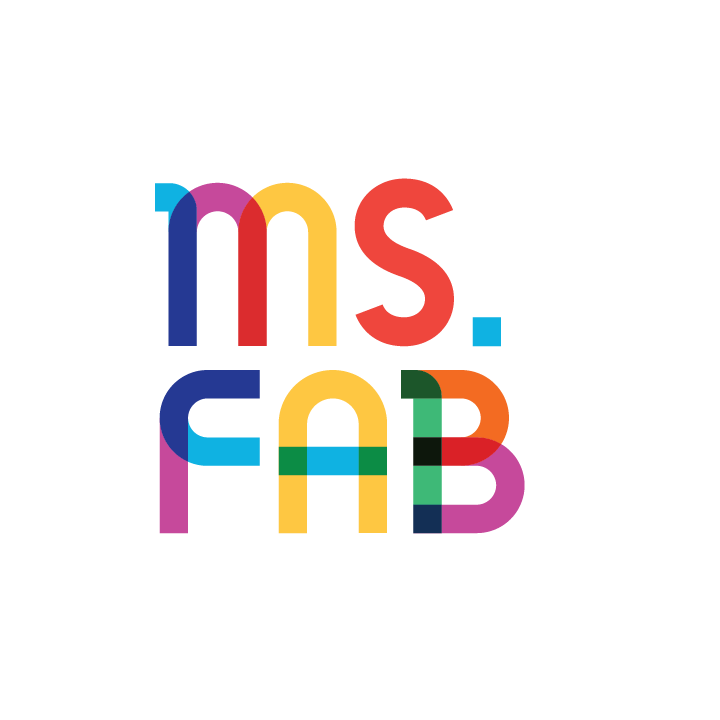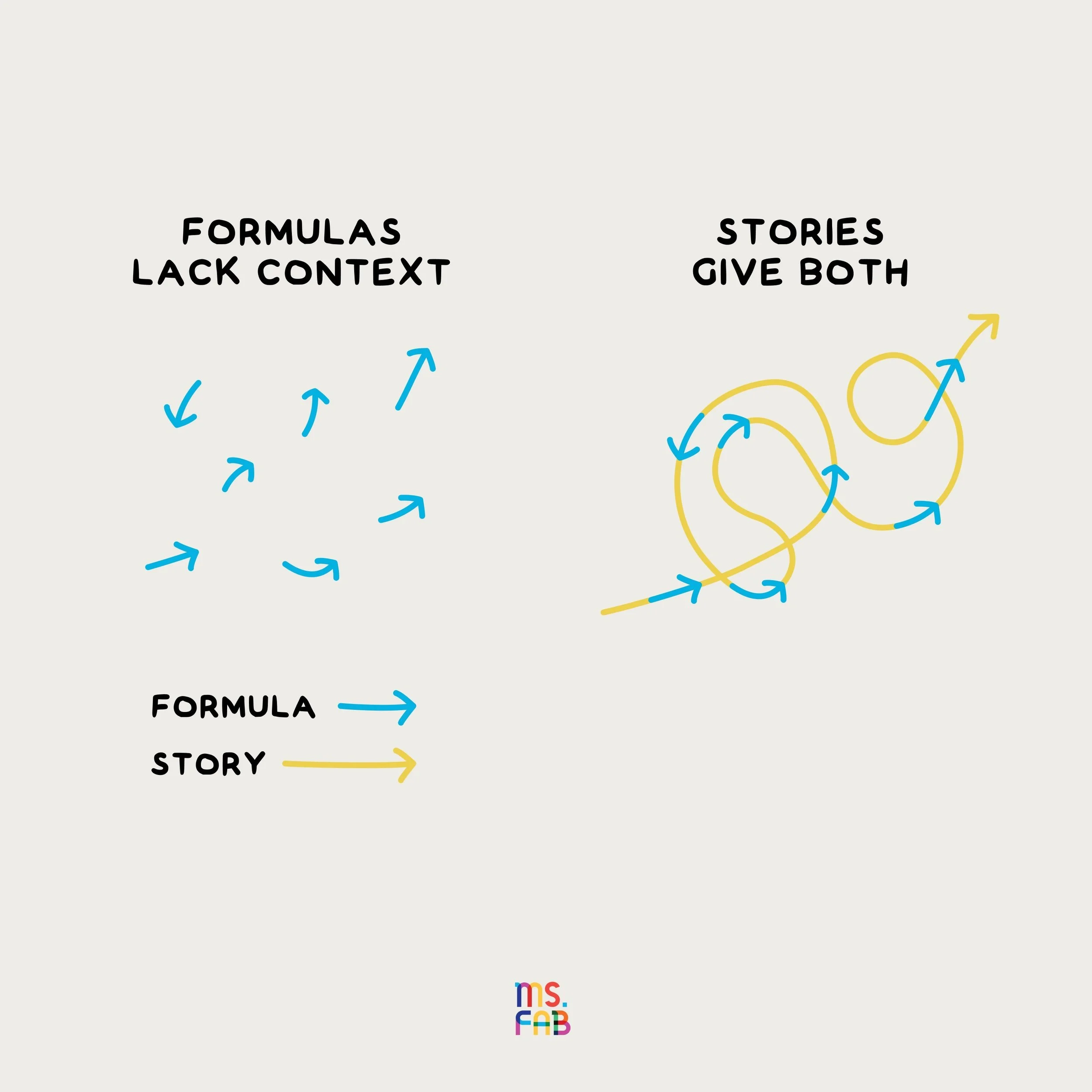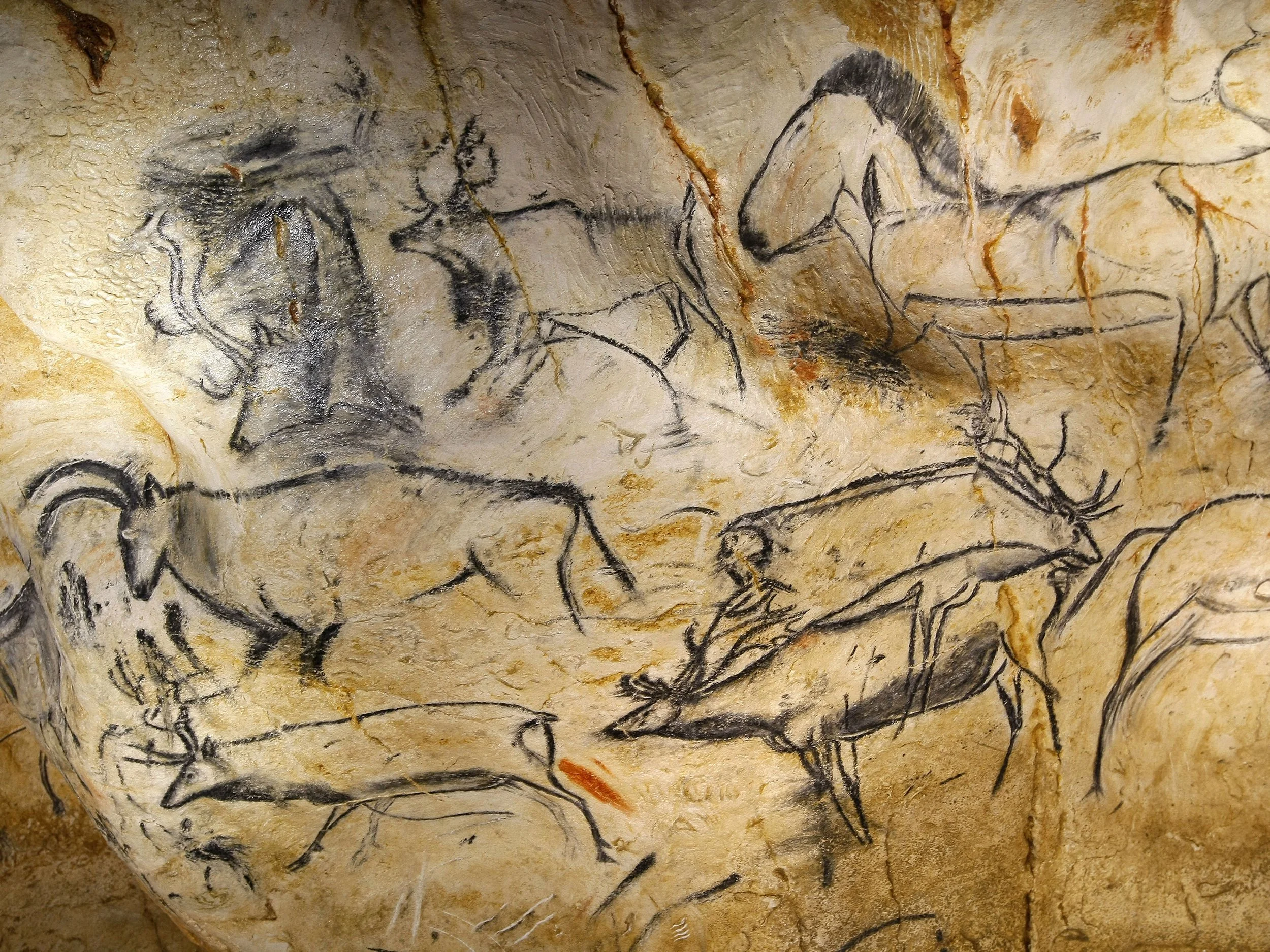Story-Driven Learning
I’m a huge fan of The Profile —and not just because Polina is a dear friend and someone I really admire. I love it for a much deeper reason.
Two years ago, I quit my job as a teacher I was fed up with how wrong schools get kids. Schools don’t teach the way humans are designed to learn.
Walk into a typical classroom today. You’ll probably find a teacher lecturing about facts, figures, and formulas. We treat kids like computers. Give them rules and information, and if they’re functioning properly, they’ll process the data and spit out the right answer. Kids who struggle must have bugs in their system.
Of course, humans are great at logic and math. But it’s not the natural way we learn. We weren’t designed in a laboratory to follow code. We evolved to learn by mimicking. We are evolved to learn from stories.
Just look at the cave drawings of our ancestors. Every once in a while, you’ll find numbers, like etched tally marks on walls, but on the whole, you’ll mostly find paintings of hunting trips. When ancient humans wanted to pass on knowledge, they shared stories of heroes for their kids to copy.
Stories are fun, engaging, exciting, and captivating. We love to hear tales of ordinary people who faced conflict, failed, picked themselves up, and found new strategies to overcome adversity. Stories make knowledge memorable and practical. They give us heroes we want to emulate.
The best educators today leverage these aspects of human nature. Think back to your favorite teacher as a child. I’m willing to bet two things.
First, they made the subject come alive with captivating illustrations. Maybe they shared from their own experience, talked about history or the news, or showed examples in class. Second, they gave you the freedom to practice what you were learning. You could take what they showed you and apply it yourself.
These teachers know how to create an environment where kids can do what they do naturally. Next time you have the chance, go watch kids play. They’re almost always pretending to live out stories they’ve heard. They copy characters from their favorite shows, games, and books. Much of the time, they’ll extend the story to include their friends, family members, and events from their own lives. In other words, they’re applying what they learn from stories to the real world.
We’d all learn much better if we copied kids. Find stories of successful people, like those from The Profile, and then practice using their tactics. This turns study from a chore to a joy. It’s the natural way we’re meant to learn.
In essence, this is what Polina does with The Profile. As she told me once:
If I want to learn something new, whether it’s about making better decisions or the French Revolution, I’ll pick a person that best embodies the idea I want to learn about. I find that it’s easier to have an emotional connection to a person, which then triggers my memory, and I actually learn and remember.
I think that what’s true of Polina is true of all of us. We learn best when we can connect an idea with a person and their story.
Consider an example. Let’s say you want to learn about decision-making. You might think the best step is to go to school and study statistics. One of your first classes would introduce you to Bayes' Theorem, a famous formula for calculating probabilities. It goes like this:
Let’s be honest. Your eyes probably glazed over. Good luck remembering all those variables! Formula-first learning is difficult because formulas are boring. We don’t naturally find them engaging. On the other hand, we’re naturally drawn to interesting people.
So, what’s a better way to learn? Instead of beginning with Bayes' Theorem, you might start with the story of Annie Duke. She’s one of the best female poker players in the history of the game. How did she become so successful? She used probability theories, like Bayes' Theorem, to make good decisions about how to make good bets. This strategy rocketed her to the top of the poker world. In 2010, she won the NBC National Heads-Up Poker Championship. Her lifetime earnings amount to over four million dollars.
Now, all of the sudden, I bet you’re much more interested in learning how to make decisions using statistics. You’ve wrapped all the numbers and theories around a person with a good story. You have someone worth mimicking.
I’m not saying mathematical formulas don’t matter. Of course they do! If we want to master something, we need to know the technical details like the backs of our hands. However, to arrive at that ultimate goal, we need to begin in the right spot. Start with stories and the rest will fall into place.
You can use this same strategy for anything. If you want to learn about engineering, you could read about the Wright brothers and then build a model plane. If you want to learn about fashion, you could start by reading about Coco Chanel and then design an outfit. If you want to learn about computers, read about Alan Kay and program an app. If you want to learn about literature, read about Mary Shelley and write a horror story. The examples are endless.
With stories, you learn how successful people achieved their greatest accomplishments—and what caused their greatest failures. Think about Steve Jobs. He was one of the greatest business leaders in history. Everyone has something to learn from him. But for years, he denied being the father of his daughter, Lisa, leaving her and her mother on welfare. The stories of real-life people teach us many things. We learn what to copy and what to avoid.
In the past, it was hard to learn from the stories of others. You’d have to read biographies of people from long ago or find a mentor in your local town. Now, that’s all changed. The internet is overflowing with stories of amazing people from every area of life. Twitter, YouTube, Wikipedia, The Profile—everywhere you look, you can find someone to learn from. This is why you should use the story-based learning strategy to enhance the learning experience.
No matter the topic, there’s an incredible story waiting to inspire you.
This piece was a guest column I wrote for The Profile, one of my favorite newsletters that features the best long-form stories on people and companies in business, tech, sports, entertainment, and more.
And in case you missed it, here is my profile and interview with Polina Marinova, author of The Profile and one of my dearest friends.
I explore ideas like this in Fab Fridays, my newsletter on childhood education with a twist + new ways to learn.
Subscribe below!





